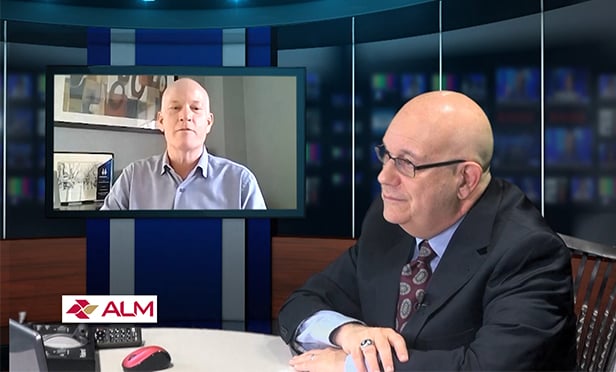CENTURY CITY, CA-The combination of staff reductions, available financing, market demand and constricted budgets infringing on both the private and public sector have significantly delayed, stalled and halted even some of the best development projects today. And according to ULI, project teams are proactively finding ways to adapt their project delivery model to respond to today’s client challenges while assisting with moving delayed and stalled projects forward.
One such model is Design-Build delivery, which, according to ULI, has proven to reduce clients’ administrative burden, streamline schedules, better control costs and considerably decrease change order requests. This method could be just the catalyst developers seek to close the deal.
More than 75 real estate industry professionals convened in the office of Greenberg Glusker in Century City, CA last week for the ULI Los Angeles Chapter stimULI Breakfast Series to discuss the design-build project delivery and how it can be used as a tool for leasing and moving projects forward in today’s economy.
Panel members at the event titled: A Solution for Today’s Challenges and Tomorrow’s Projects included: Jim Jacobsen of Lee & Associates; Steve Soboroff of Soboroff Partners; Mike Rogers of HKS; Don Carp of Pankow; and moderator Kelly Duke of ValleyCrest Landscape Development.
Why Design Build?
One reason to use the design-build delivery is clearer accountability, according to panelists. You have one point of contact for design and construction and less finger pointing, says panelist, Soboroff, who noted, “When something goes wrong in a typical bid-build scenario, the contractor blames the architect, the architect blames the contractor and the developer ends up footing the bill. With design-build, the architect and contractor are one team so finger pointing doesn’t work.”
Another reason, according to ValleyCrest’s Duke is improved cost control. Tying the design to a constructible end product during the beginning phases allows the team to identify and resolve budget issues early and make more informed decisions, Duke said. “Many times, the lowest price bidder will offer less scope and a lot less quality. Make sure you’re looking at the experience of each team by discipline on projects with similar scope as well as the experience of the teams working together. Past successes will be your clearest indication of potential for meeting your goals for your project.”
Faster time to market is also a plus, says Mike Rogers of HKS. The design and construction teams can work concurrently to expedite the time it typically takes to complete the project, he said. “With design-build, it’s not about compressing the schedule; it’s about overlapping the work for the teams in each discipline.”
According to Carp, design-build maximizes investment because the team collaborates and shares input from the start of project visioning, as a group they are able to identify the “sacred cows” and determine throughout the development process how to best preserve them while meeting budget and schedule goals. “When you build consensus early, you get everyone on the bus going to the same destination.”
Before choosing design-build
Before choosing design-build, panelists say it is important to make sure the unions are on board with design-build and get your lender on board with design-build. Carp sited the Richmond Civic Center Revitalization as an example of a project that was able to receive public bond funding because of the speed at which the team, using design-build, delivered estimates and seismic retrofits.
As an owner, panelists encouraged the attendees to learn as much as you can about design-build and how you can set-up the contract and selection process for success. “If expectations aren’t clear from a liability and execution standpoint from day-one, you have a recipe for disaster” stated Rogers.
“The team needs to have a previously established relationship of trust,” stated Carp. “If the trust is already there, the team can focus their energy on creative and innovative solutions without second guessing others’ motivations.”
Duke added that “Projects that need to be fast-tracked, require special or long lead time materials, are slated to become LEED-certified, and/or have integrated or overlapping systems are all good candidates for design-build.”
Recipe for a successful design-build team
When selecting your project team, set up your selection process for determining best value as opposed to lowest price, advised panelists. “Get the team together during project visioning, identify your “sacred cows” and make sure everyone is on board.” Rogers suggested, “Bring in as many team members as you can during the early program development conversations. It is often the people who have a small part that help most in setting the theme or heading off problems down the road such as artists, colorists and parking consultants.”
As the team works together and shares ideas the project will evolve, said panelists. It is critical the team is allowed the flexibility for the evolution to take place, they added. “At Lantana [a multi-building entertainment-media office project in Santa Monica, CA] our entire team needed to be tremendously flexible. We had to adjust to the Expo Phase Two ‘rail to the sea’ bisecting our property. The project only continued to move forward on a path to success because design-build allowed for that flexibility and the collaboration needed to find creative solutions to make it work,” stated Jacobsen.
In addition, panelists pointed out that owners need to establish a clear vision and goals for the project or collaborate with trusted team members to develop the vision and goals. Soboroff said that “When I start a project, the first thing I think about is how I want the occupant to feel when they go to work, when they go to the movies, when they come home at night and how the space will enhance their lives in that interaction.”
On the topic of goal setting, Jacobsen invited his end-user prospects on tours with his project team. The tours became a forum for the team to understand precisely what the end-users expected, needed and dreamed up. Lastly, the panel said to “design and build for long-term maintenance.”
Want to continue reading?
Become a Free ALM Digital Reader.
Once you are an ALM Digital Member, you’ll receive:
- Breaking commercial real estate news and analysis, on-site and via our newsletters and custom alerts
- Educational webcasts, white papers, and ebooks from industry thought leaders
- Critical coverage of the property casualty insurance and financial advisory markets on our other ALM sites, PropertyCasualty360 and ThinkAdvisor
Already have an account? Sign In Now
*May exclude premium content© 2024 ALM Global, LLC, All Rights Reserved. Request academic re-use from www.copyright.com. All other uses, submit a request to [email protected]. For more information visit Asset & Logo Licensing.








